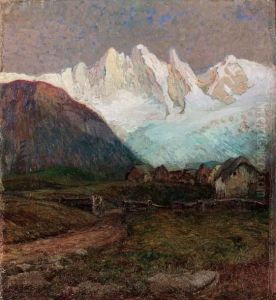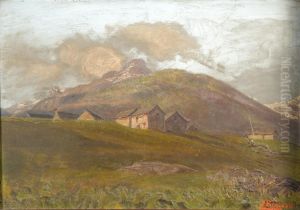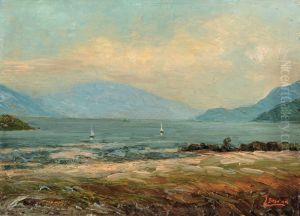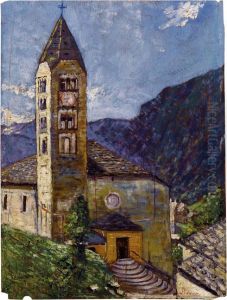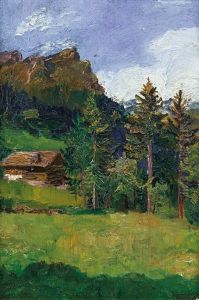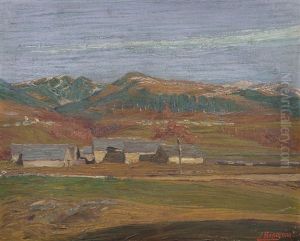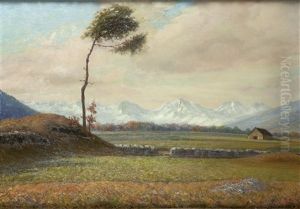Camillo Besana Paintings
Camillo Besana was an Italian painter and decorator born in 1826, in Monza, Lombardy. He was primarily known for his frescoes and decorative works within the context of the late Romantic and early Eclectic movements, which were prevalent during his time. Besana's artistic endeavors are often characterized by their historical and allegorical content, reflecting the taste and cultural inclinations of the Italian bourgeoisie during the Risorgimento, the period of Italy's unification.
The artist received his initial training in Milan, where he was influenced by the local artistic scene and the teachings of prominent artists and instructors of the era. As a young artist, he was deeply immersed in the fervor of Italian nationalism and the desire for a unified Italy, which often found expression in his art. His works often include patriotic themes and are imbued with a sense of Italian cultural identity, which was a significant subject of artistic exploration during the 19th century.
Camillo Besana’s career saw him working on numerous public and private commissions, particularly in the decoration of palaces, churches, and public buildings. His approach to fresco painting was traditional, yet he managed to infuse it with a sense of contemporaneity by incorporating modern subjects and techniques. This allowed him to maintain a successful career throughout the changing artistic tastes of the period.
Although not as widely known today as some of his contemporaries, Besana contributed significantly to the cultural landscape of Italy during his lifetime. His works are part of the fabric of 19th-century Italian art and reflect the societal changes and aesthetic preferences of his time. The appreciation of his art is mainly regional, with significance attached to his contributions in Lombardy and the surrounding areas.
Camillo Besana passed away in 1904, leaving behind a legacy of historical and decorative art that continues to be studied and appreciated by those interested in the Italian art of the 19th century. While his name may not be familiar to the broader international audience, his work remains an important part of Italy’s rich artistic heritage.
